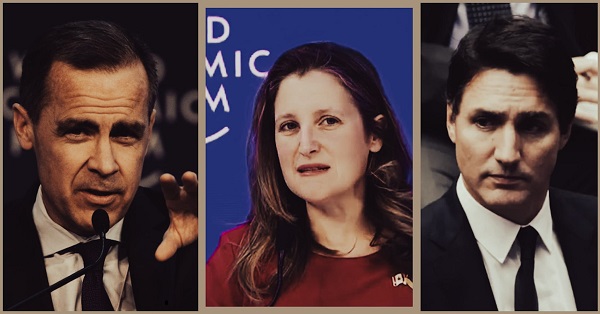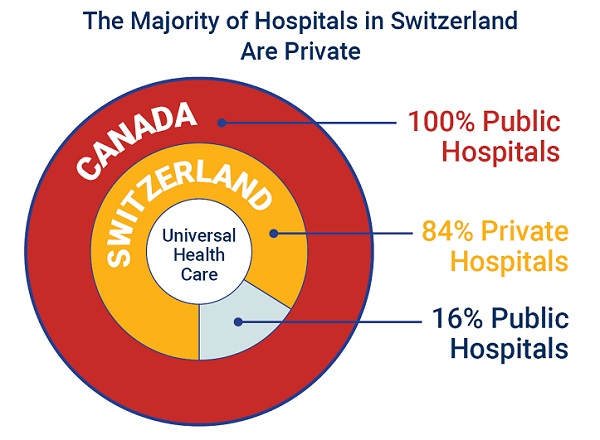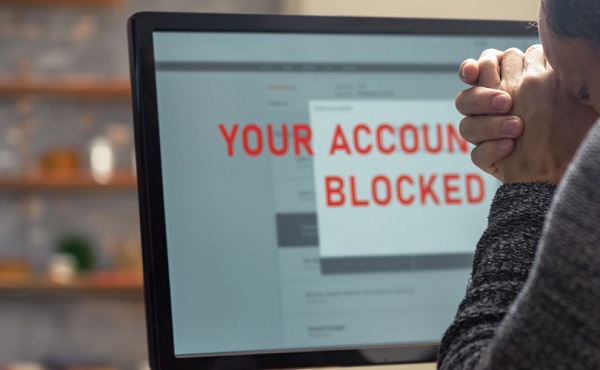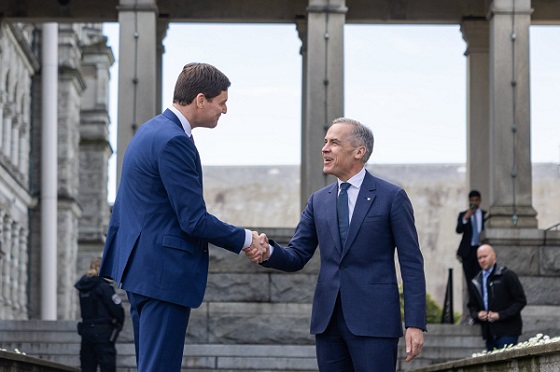National
Trudeau’s Last Stand, Resignation Rumors Swirl as Liberals Face Political Oblivion

With Polls in Free Fall and a Caucus Revolt Brewing, Analyst believe the Liberals will Bet on Identity Politics to Distract Canadians From Nine Years of Failure
If you haven’t already, crank up Whitesnake’s Here I Go Again, because the Liberal Party is hitting all the same notes in their spectacular fall from grace. Rumors are swirling that today Justin Trudeau, the king of platitudes and bad policies, might finally call it quits after nine long years of setting Canada on fire and calling it progress.
So, why is Trudeau on the verge of resignation? Because he’s facing a caucus revolt. Apparently, some of these MPs weren’t thrilled they didn’t get picked for the very last liberal cabinet shuffle, (or maybe it has to do with the latest Anguis Reid polls) which is funny considering they’ve had years to boot this guy. Instead, they’ve spent their time smiling for photo ops and pretending the country isn’t spiraling into chaos. Now, with the next election practically on the doorstep—2025, people—they’re panicking. And it’s glorious to watch.
Let’s set the stage: the latest Angus Reid poll is catastrophic for the Liberals. They’re sitting at 16%—that’s not just bad, that’s “we’re going to lose half our seats” bad. For context, the NDP is at 21%, which is embarrassing enough, but the Conservatives are at 45%. These are Harper-era numbers, folks. Pierre Poilievre isn’t just winning; he’s running victory laps before the race has even started.
So, what are the Liberals going to do? Well, they have three options. Spoiler alert: they’re all terrible.
Option 1: Prorogue Parliament and Hold a Leadership Race
So here’s the Liberals’ desperate move: prorogue Parliament, delay governing, and launch a leadership race to distract Canadians from their failures. It’s a political circus waiting to happen. Every ambitious Liberal—Freeland, Carney, Champagne—will throw their hat in the ring, and none of them are ready to clean up Trudeau’s mess.
But here’s the kicker: the clock is ticking. The fiscal year ends March 31, and without passing Interim Supply, the government literally shuts down. A leadership race takes months, leaving the party paralyzed while Pierre Poilievre dominates the narrative.
A new leader won’t fix anything; they’ll just inherit a sinking ship and take the blame for the inevitable electoral disaster. This isn’t a solution—it’s a slow, painful march toward oblivion while Canadians demand real leadership.
Option 2: Force a Leader Down Our Throats
Here’s where it gets spicy. The Liberals could skip the drama and appoint a new leader outright—someone like Chrystia Freeland. This would be their Kamala Harris moment. They’d toss Trudeau overboard, slap Freeland on the podium, and scream from the rooftops, “Canada’s First Female Prime Minister!” The media would eat it up. They’d call it historic, groundbreaking, revolutionary.
But here’s the first roadblock: Trudeau doesn’t have to go anywhere unless he decides to. That’s right, folks—there’s no magical “kick him out” button in the Liberal Party rulebook. Even if half his caucus is banging down his office door with pitchforks, Trudeau can just sit back, flash his trademark grin, and say, “I’m still your guy.” It’s less of a democratic process and more of a monarchy with better PR.
Now, let’s assume Trudeau does step down because, let’s face it, his ego might be the only thing keeping him there. Enter Chrystia Freeland. The Liberals would roll her out as the savior of their sinking ship.
But here’s the problem: Freeland’s record is awful. She’s been Trudeau’s loyal sidekick for years, backing every bad policy this government has pushed. From the $65 billion budget blowout to fraudulent COVID loans to the carbon tax disaster, Freeland has her fingerprints all over this mess. She’s not a fresh start; she’s Trudeau 2.0, but with less charisma.
And let’s be real, the Liberals wouldn’t run on their record because their record is a disaster. Instead, they’ll double down on identity politics. Freeland will be the face of the campaign, and the talking points will be predictable: “Conservatives hate women. Conservatives will ban abortion. Conservatives are scary.” It’s the same broken record we’ve heard a million times before. It didn’t work in the U.S., and it’s not going to work here. Canadians are smarter than that.
Option 3: Let Trudeau Go Down with the Ship
Now, this might actually be the smartest move. Trudeau built this disaster. He deserves to be the face of the loss. Let him captain the ship straight into the abyss, take the hit in the next election, and then rebuild from the ashes. It’s not pretty, but it’s probably the cleanest way to salvage the Liberal brand long-term.
But we all know the Liberals won’t do this. They’re too arrogant, too desperate, and too addicted to their own spin. Instead, they’ll probably shove Freeland into the spotlight either through a leadership race or just by bypassing the vote and just giving her the reigns and let her ride the Titanic into electoral oblivion, and then act surprised when it all goes horribly wrong.
Trudeau’s Titanic, Freeland’s Fantasy, and the Liberal Pipe Dream
So, here’s what I expect to happen, and honestly? Good riddance to Trudeau. Nine years of turning this country into a woke, bloated, over-taxed shell of what it used to be—his time is up. But let’s be real, the Liberals’ ship hit the iceberg years ago. Now they’re panicking because it’s finally sinking, and they’re trying to figure out who’s going to be the face of the wreckage. Spoiler alert: none of their options are good.
Here’s their play: they’re going to pull the Kamala Harris switcheroo. Replace Trudeau with Chrystia Freeland, slap a big, shiny label on her as Canada’s “First Female Prime Minister,” and hope nobody notices she was the co-pilot of this crash. Freeland has been positioning herself for this moment for years. She’s stood right next to Trudeau, smiling, nodding, and championing the very policies that have made Canadians poorer, angrier, and ready to vote Conservative in record numbers.
But here’s what they don’t want you to know—and here’s what they won’t campaign on: the Liberal record. Why? Because it’s abysmal. Corruption? Check. They handed out COVID loans like Halloween candy, with billions lost to fraud. Deficits? Oh, just a casual $65 billion for 2024. Inflation? A raging fire that’s destroying Canadians’ savings and quality of life. Authoritarian measures? Let’s not forget freezing bank accounts during the Freedom Convoy protests. Big government? That’s not just their record; it’s their entire identity.
And with Freeland at the helm, that’s not going to change. What’s the plan? Double down on identity politics, of course. “Chrystia Freeland: Canada’s First Female Prime Minister.” That’ll be the headline. That’ll be the news cycle. And anyone who questions her? Sexist. Misogynist. Anti-woman. Oh, and here’s the cherry on top: they’ll pivot straight to abortion rights. Why? Because they think it’s the one play that still works. Ignore the economy. Ignore the housing crisis. Ignore the fact that Canadians are literally rationing food. Just scream, “The Conservatives hate women!” and hope it sticks.
If I were a Liberal strategist—and thank God I’m not—I’d tell them to shove Freeland down our throats now. Why? Because the leader of the Titanic isn’t making it out alive. Whoever takes over the Liberal Party right now is going down with the ship, no question about it. Freeland appeals to the Liberal base: the blue-haired Twitter warriors, the downtown elites, the latte liberals. That’s her crowd. But here’s the problem: that’s it. She’s not reaching the working-class Canadians who are sick of paying for Liberal failures. Hillary Clinton has more likability than Freeland, and that’s saying something.
So, yes, they’ll run her on abortion rights, paint the Conservatives as the boogeyman, and pretend Canadians don’t notice they’ve been absolutely terrible for nine years. But let’s be honest—this is a political kamikaze mission for Freeland. The election results in 2025 are going to be catastrophic for the Liberals. And once the dust settles, Freeland is finished. She’ll be the face of the defeat, the one who led the party into the abyss.
And that’s why the real Liberal leadership race starts after the election. Mark Carney, the former Bank of Canada governor, is waiting in the wings. He’s smart enough to know the Liberals need to burn to the ground first before they can rebuild. He’s the only one who can go toe-to-toe with Pierre Poilievre on fiscal policy. If the Liberals want to have a shot at relevance in 10 years, Carney’s their guy. Pair him with someone like Christy Clark as deputy liberal opposition leader, and maybe—maybe—they can reforge the Liberal brand.
But Trudeau? He should go down with the ship. He built this disaster. He’s the reason the Liberals are at 16% in the polls while the Conservatives are at 45%. Let him take the fall. Let the party burn, and let the next generation of upstarts fight over the ashes. Freeland can have her moment, her delusion that she can fix this, but she’s only walking into political oblivion.
So here’s my advice to the Liberals: pour the champagne, play the violin, and let Justin Trudeau captain his sinking ship. And hey, as the ship goes down, maybe Trudeau can declare himself a transgender woman to grab the first spot on the lifeboat—because nothing says progressive hero like skipping the line while the rest of the crew drowns in his mess.
Subscribe to The Opposition with Dan Knight .
For the full experience, upgrade your subscription.
Business
Carney praises Trump’s world ‘leadership’ at G7 meeting in Canada

From LifeSiteNews
Canada’s prime minister said it was a ‘great honor’ to host the U.S. president and praised him for saying Canada wants to work with the U.S. ‘hand-in-hand.’
During the second day of the G7 leaders meeting in the Kananaskis area in Alberta, Canadian Prime Minister Mark Carney praised U.S. President Donald Trump’s world “leadership” despite saying many negative things about him during his election campaign.
While speaking to reporters Monday, Trump hinted that a new trade deal between Canada and the United States was potentially only “weeks” away. This came after a private meeting with Carney before the official G7 talks commenced.
“We’ve developed a very good relationship. And we’re going to be talking about trade and many other things,” Trump told reporters.
Carney was less vocal, however. He used the opportunity to tell reporters he was happy Trump came to his country for the G7 meeting, saying it was a “great honor” to host him.
“This marks the 50th birthday of the G7, and the G7 is nothing without U.S. leadership,” Carney told reporters.
He then spoke about Trump’s “personal leadership” on world issues and praised him for saying Canada wants to work with the U.S. “hand-in-hand.”
Carney ran his election campaign by claiming the Conservative Party would bow to Trump’s demands despite the fact that the party never said such things.
During his federal election campaign, Carney repeatedly took issue with Trump and the U.S. that turned into an anti-American Canadian legacy media frenzy.
However, the reality is, after Carney won the April 28 federal election, Trump praised him, saying, “Canada chose a very talented person.”
Many political pundits have said that Carney owes his win to Trump, as the U.S. president suggested on multiple occasions that he would rather work with Carney than conservative leader Pierre Poilievre.
Trump has routinely suggested that Canada become an American state in recent months, often making such statements while talking about or implementing trade tariffs on Canadian goods.
As for Carney, he has said his government plans to launch a “new economy” in Canada that will involve “deepening” ties to the world.
Business
Carney’s Honeymoon Phase Enters a ‘Make-or-Break’ Week

From the National Citizens Coalition
The National Citizens Coalition (NCC) is sounding the alarm on a critical week for the Carney government, which, despite enjoying an unearned honeymoon in the polls, has delivered zero results for everyday Canadians. As the G7 summit looms large and the House of Commons prepares to adjourn, this is a make-or-break moment for Prime Minister Mark Carney to prove his government is more than empty promises. Canadians are watching, and the NCC is calling out the glaring failures that threaten a grim summer of economic decline, and continued crime, chaos, and rising unemployment.
Housing Minister Gregor Robertson Caught in $10.85 Million Scandal
Recent revelations from Blacklock’s Reporter expose Housing Minister Gregor Robertson’s attempt to conceal $10.85 million in personal property investments during Commons questioning. This shocking lack of transparency from the minister tasked with addressing Canada’s housing crisis raises serious questions about his integrity and ability to prioritize Canadians struggling with skyrocketing costs. While Robertson dodges accountability, and Carney apparently scoffs at providing housing relief to millions suffering under a Liberal-made crisis, young professionals and young families are wondering if they’ll ever have a chance to own a home bigger than Canada’s much-maligned supply of ‘dog-crate condos.’
The NCC demands a full ethics investigation, the resignation of Gregor Robertson — who, as one of the architects of the Vancouver housing crisis, should have never been handed this file to begin with — and immediate action to restore trust in this critical portfolio.
Pipeline Delays and Provincial Obstruction Threaten Economic Growth
The Carney government’s inaction on pipelines is stalling Canada’s economic potential. Despite promises of “nation-building projects,” British Columbia and Quebec continue to block and veto critical energy infrastructure, with Carney failing to assert federal leadership. His vague talk of “consensus” and “decarbonized” barrels has led to zero progress, leaving Alberta’s economy in limbo and Canadians facing higher energy costs. With no clear plan to advance projects, the government is squandering opportunities to create jobs and secure energy sovereignty. The NCC urges Carney to act decisively this week to break the provincial logjam and deliver results.
Immigration Chaos: Lena Diab’s Unchecked Honour System Fails Canadians
Immigration Minister Lena Diab’s reliance on an ‘honour system’ for millions of temporary visitors with expiring visas is a recipe for disaster. As Canada grapples with unsustainable immigration levels, Diab’s apparent plan for millions of temporary workers and failed ‘diploma mill’ attendees assumes compliance without enforcement, ignoring the high-propensity for fraud, and the ongoing and urgent strain on housing, healthcare, and public services. The Liberals’ Strong Borders Act promises reform, but its loaded with unnecessary overreach and vague measures.
A lack of urgency leaves Canadians vulnerable to further crime, chaos, closed emergency rooms, high rents, and failing infrastructure. With immigration continuing to spiral out of control, the NCC calls for concrete action to drastically lower immigration targets, expedite deportations, and prioritize Canadian citizens and the record amounts of unemployed before the House adjourns.
Canadians Deserve Results, Not More Hollow “Elbows up” or “Team Canada” Rhetoric
This week’s G7 summit in Alberta and the impending House adjournment are the Carney government’s last chance to show leadership, before an undeserved summer break for a government that will be overseeing deepening economic decline, rising crime under a refusal to tackle catch-and-release bail, and growing unemployment. Canadians cannot afford another season of unfulfilled promises and unchecked crises. The NCC demands Carney use the G7 platform to secure trade stability, meaningful energy deals with our allies, and table a federal budget to address the cost-of-living crisis made worse by inflationary Liberal spending. Failure to act now will cement an early legacy of inaction and leave Canadians to endure a prolonged period of hardship.
“The Carney government’s honeymoon has been built on hype, not results,” says NCC Director Alexander Brown. “From Gregor Robertson’s hidden millions, to stalled pipelines, to an immigration system in continued disarray, Canadians — and particularly young Canadians — are being let down. This week is Carney’s chance to prove he can deliver beyond the lies that were told to placate a portion of the electorate at the polls. If he fails to act, the economic decline, the crime and chaos, will only worsen, and everyday Canadians will pay the price.
“True Canadian leaders like Alberta Premier Danielle Smith are in attendance at the G7 along with Carney. If actual acts of ‘nation-building,’ and not more net-zero de-growth, do not come naturally to the PM, he should turn to those who have never wavered in their quest to make life more affordable for the hard-working citizens they are privileged to represent, and who know when to get out of the way to allow Canadians to prosper. More of the same internal, ideological sabotage from the Liberals cannot ruin this dire moment for Canada’s rebirth and recovery.”
The NCC calls on all Canadians to hold the Carney government accountable. Join us in demanding transparency, action, and results before the House adjourns and the G7 summit concludes. Together, we can fight for a stronger, more prosperous Canada.
About the National Citizens Coalition: Founded in 1967, the NCC is a non-profit organization dedicated to advocating for individual freedom, lower taxes, less government waste, and a stronger Canada. We hold governments accountable and fight for the interests of everyday Canadians.
-

 Alberta1 day ago
Alberta1 day agoAlberta’s grand bargain with Canada includes a new pipeline to Prince Rupert
-

 Bruce Dowbiggin17 hours ago
Bruce Dowbiggin17 hours agoWOKE NBA Stars Seems Natural For CDN Advertisers. Why Won’t They Bite?
-

 Business1 day ago
Business1 day agoCarney’s European pivot could quietly reshape Canada’s sovereignty
-

 Energy17 hours ago
Energy17 hours agoCould the G7 Summit in Alberta be a historic moment for Canadian energy?
-

 Crime17 hours ago
Crime17 hours agoMinnesota shooter arrested after 48-hour manhunt
-

 Crime2 hours ago
Crime2 hours agoUK finally admits clear evidence linking Pakistanis and child grooming gangs
-

 Crime2 days ago
Crime2 days agoManhunt on for suspect in shooting deaths of Minnesota House speaker, husband
-

 Health12 hours ago
Health12 hours agoLast day and last chance to win this dream home! Support the 2025 Red Deer Hospital Lottery before midnight!





